How to Grow Star Magnolia
- March 22, 2024
- 0 comment
Learn how to grow Star Magnolia (Magnolia stellata) with our comprehensive guide. Discover tips to nurture this captivating flowering shrub for a touch of springtime magic in your garden. With its star-shaped blooms and graceful form, it’s a favorite among gardeners looking to add a touch of springtime magic to their outdoor spaces. If you’re considering growing star magnolia or already have one in your garden, here’s a comprehensive guide to help you nurture this stunning plant to its fullest potential.

List on How to Grow Star Magnolia
- Understanding Star Magnolia
- Selecting the Right Location
- Planting Tips
- Watering and Maintenance
- Fertilizing
- Protecting from Pests and Diseases
- Enjoying the Blooms
Understanding Star Magnolia
Native to Japan, star magnolia is a deciduous shrub that typically reaches a height of 10 to 15 feet with a similar spread. It is renowned for its early spring blooms, which appear before the leaves emerge. The flowers feature delicate, star-shaped petals in shades of white or pale pink, exuding a sweet fragrance that attracts pollinators like bees and butterflies.
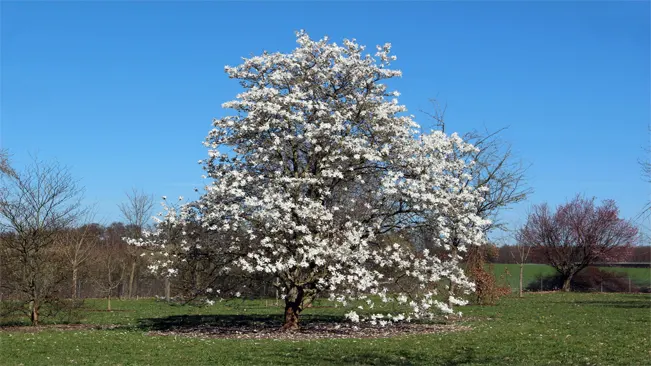
- Origin and Description: Star magnolia, scientifically known as Magnolia stellata, originates from Japan. It has been cultivated for centuries, admired for its beauty and resilience. This deciduous shrub typically grows to a height of 10 to 15 feet, with a similar spread, making it an ideal addition to gardens of various sizes.
- Flowering Season: One of the most remarkable features of star magnolia is its early spring blooms. Even before the leaves unfurl, the plant bursts into a profusion of delicate flowers. These blossoms boast star-shaped petals that come in shades ranging from pure white to soft pink, creating a breathtaking display against the backdrop of awakening spring landscapes.
- Fragrance and Pollination: The flowers of star magnolia not only captivate the eye but also delight the senses with their sweet fragrance. This alluring scent serves to attract pollinators, including bees and butterflies, which play a crucial role in the plant’s reproductive cycle. As these insects visit the flowers in search of nectar, they inadvertently facilitate pollination, enabling the production of seeds for future generations.
- Cultural Significance: Beyond its ornamental value, star magnolia holds cultural significance in various contexts. In Japan, where it originates, the plant is celebrated for its beauty and symbolism. It often features in traditional art forms such as painting and poetry, embodying themes of grace, purity, and the fleeting beauty of spring. In Western cultures, star magnolia is esteemed as a cherished ornamental plant, adorning gardens, parks, and landscapes with its ethereal blooms.
- Garden Uses: Star magnolia is a versatile plant that can be used in a variety of garden settings. It serves as a focal point in mixed borders, where its early blooms provide a stunning contrast to later-flowering plants. It also excels as a specimen plant, commanding attention with its graceful silhouette and profuse flowers. Additionally, star magnolia can be incorporated into woodland gardens, where its naturalistic charm enhances shaded areas with bursts of springtime color.
- Cultivation and Care: Growing star magnolia requires attention to its specific needs. The plant thrives in well-drained soil that is rich in organic matter. It prefers a location with full sun to partial shade, although it can tolerate some shade, particularly in warmer climates. Regular watering, especially during the establishment phase, is essential for optimal growth and flowering. Pruning should be done judiciously, preferably after flowering, to maintain the plant’s shape and promote vigorous growth.
Selecting the Right Location
- When planning to grow star magnolia, selecting the right location is crucial for its overall health and vitality. Star magnolias thrive in well-drained soil that is rich in organic matter. They prefer full sun to partial shade, although they can tolerate some shade, especially in hot climates. Choose a spot in your garden that receives morning sun and afternoon shade for optimal blooming.
Planting Tips
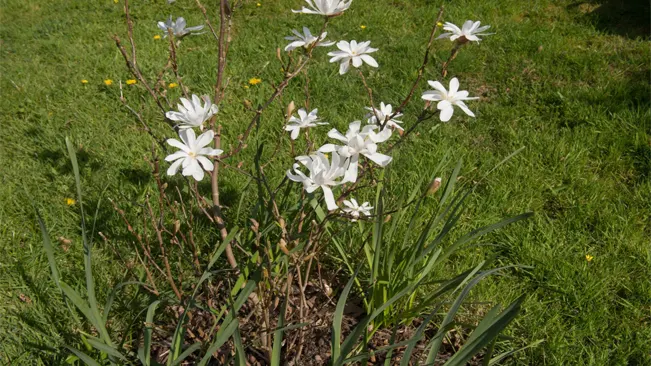
- Soil Preparation: Begin by preparing the planting site. Star magnolias thrive in well-drained soil that is rich in organic matter. Prior to planting, amend the soil by incorporating compost, aged manure, or other organic materials. This will improve soil fertility, texture, and drainage, providing an ideal environment for root growth.
- Digging the Hole: When selecting the planting location, ensure it receives adequate sunlight and has enough space for the mature size of the star magnolia. Once you’ve chosen the spot, dig a hole that is two to three times wider than the root ball of the plant. The depth of the hole should be equal to the height of the root ball.
- Loosening the Roots: Carefully remove the star magnolia from its container or root ball. Gently loosen the roots, being careful not to damage them. This will encourage the roots to spread outwards into the surrounding soil once planted, promoting better nutrient and water uptake.
- Placing the Plant: Position the star magnolia in the center of the prepared hole, ensuring that the top of the root ball is level with the surrounding soil surface. Take care not to plant the tree too deep, as this can suffocate the roots and hinder growth. Adjust the depth of the hole if necessary.
- Backfilling and Firming: Once the plant is properly positioned, backfill the hole with the amended soil. Use a mixture of the existing soil and organic matter to fill in the space around the roots. Tamp down the soil gently as you backfill to eliminate air pockets and ensure good soil-to-root contact. Avoid compacting the soil too firmly, as this can restrict root growth.
Watering and Maintenance
Watering
Proper watering is particularly important during the initial stages of growth when the star magnolia is establishing its root system. Adequate moisture helps the plant develop strong roots, which are essential for its long-term health.
- Deep watering: Ensure that water penetrates deeply into the soil to encourage roots to grow downwards. Shallow watering can result in shallow root systems, making the plant more susceptible to stress during periods of drought.
- Consistent moisture: Maintain even moisture levels in the soil, avoiding extremes of dryness or waterlogging. Check the soil regularly, especially during hot or dry weather, and adjust your watering schedule accordingly.
- Avoid overhead watering: Water the soil around the base of the plant rather than overhead, as wet foliage can increase the risk of fungal diseases.
- Mulching: Applying a layer of organic mulch, such as wood chips or shredded bark, around the base of the plant can help conserve soil moisture by reducing evaporation and suppressing weed growth. Keep the mulch a few inches away from the trunk to prevent moisture-related issues.
Maintenance
Regular maintenance tasks, including pruning and fertilizing, are essential for promoting healthy growth and blooming in star magnolia.
- Pruning: Pruning your star magnolia is typically done after flowering, usually in late spring or early summer. Remove any dead, diseased, or damaged branches, as well as any crossing or rubbing branches. Pruning not only improves the plant’s appearance but also enhances air circulation and reduces the risk of pests and diseases.
- Fertilizing: Star magnolias generally do not require heavy fertilization, but applying a balanced, slow-release fertilizer in early spring can provide essential nutrients for healthy growth and flowering. Avoid excessive fertilization, as this can lead to excessive foliage growth at the expense of blooms.
- Pest and disease management: While star magnolias are relatively resistant to pests and diseases, they may occasionally encounter issues such as scale insects, aphids, or powdery mildew. Monitor your plants regularly for signs of infestation or disease, and take prompt action to address any problems. Insecticidal soap or horticultural oils can help control pests, while proper sanitation and adequate air circulation can prevent fungal diseases.
Fertilizing
Fertilizing star magnolias is an essential aspect of their care regimen, albeit they don’t demand excessive feeding. The aim of fertilization is to supplement the soil with essential nutrients, particularly during periods of active growth, to support healthy foliage and prolific blooming.
- Balanced Fertilization: Star magnolias benefit from a balanced fertilizer, one that contains a mix of nitrogen (N), phosphorus (P), and potassium (K). These nutrients are crucial for various aspects of plant growth, including leaf development, root growth, and flower production. Look for a fertilizer with an N-P-K ratio of around 10-10-10 or similar, which provides a balanced blend of nutrients without skewing towards excessive growth in any particular area.
- Timing of Fertilization: The best time to fertilize star magnolias is in early spring, just as new growth begins to emerge. This timing aligns with the plant’s natural growth cycle, allowing it to utilize the nutrients effectively as it enters a period of active growth and blooming. Avoid fertilizing too late in the season, as this can encourage late-season growth that may not have sufficient time to harden off before winter, potentially leading to frost damage.
- Application Method: Apply fertilizer evenly around the base of the plant, extending to the drip line (the outer circumference of the plant’s canopy). Use a handheld spreader or scatter the fertilizer by hand, ensuring uniform coverage. Water the area thoroughly after fertilizing to help dissolve the nutrients and carry them down to the root zone.
- Avoid Over-Fertilizing: While it’s essential to provide star magnolias with adequate nutrition, over-fertilizing can have adverse effects. Excessive nitrogen, in particular, can stimulate lush foliage growth at the expense of flower production. Follow the manufacturer’s recommendations for application rates closely, and refrain from applying more fertilizer than necessary. A slow-release fertilizer is preferable as it provides a steady supply of nutrients over time, reducing the risk of nutrient leaching and minimizing the potential for nutrient imbalances.
- Monitoring and Adjusting: Regular monitoring of your star magnolia’s growth and appearance can help you assess its nutrient needs. If you notice signs of nutrient deficiencies, such as yellowing leaves or poor flowering, you may need to adjust your fertilization regimen accordingly. Conducting a soil test can also provide valuable insights into the soil’s nutrient levels, allowing you to tailor your fertilization program more precisely.
Protecting from Pests and Diseases
Pests

- Scale Insects: Scale insects are small, sap-sucking pests that often appear as tiny bumps on the stems or leaves of plants. They can weaken the plant and cause yellowing or wilting of leaves. To control scale insects on your star magnolia, you can apply insecticidal soap or horticultural oils according to the manufacturer’s instructions. These products suffocate the pests and disrupt their life cycle.
- Aphids: Aphids are another common pest that feed on the sap of plants, causing distorted growth and the presence of sticky honeydew. You can remove aphids from your star magnolia by spraying them off with a strong stream of water or using insecticidal soap. Ladybugs and lacewings are natural predators of aphids and can help keep their populations in check.
Diseases
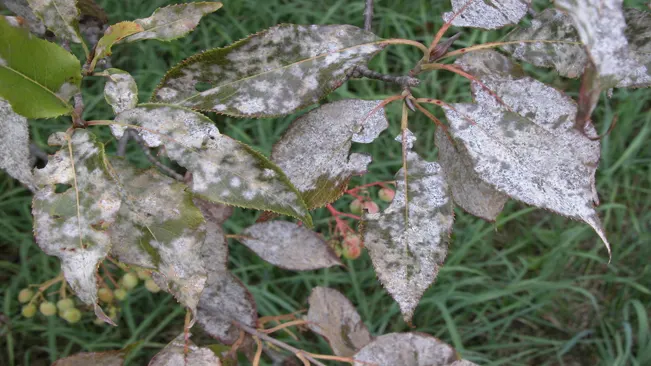
- Powdery Mildew: Powdery mildew is a fungal disease that appears as a white powdery coating on the leaves, stems, and buds of plants. It thrives in humid conditions and can weaken the plant over time. To prevent powdery mildew on your star magnolia, ensure proper air circulation by spacing plants adequately and avoiding overcrowding. Prune out and destroy infected plant parts, and consider applying fungicidal treatments if the problem persists.
General Tips for Prevention and Management
- Regular Monitoring: Keep a close eye on your star magnolia for any signs of pest infestation or disease. Early detection allows for prompt intervention and prevents problems from escalating.
- Sanitation: Remove and dispose of any fallen leaves, flowers, or debris around your star magnolia regularly. This helps eliminate hiding places and breeding grounds for pests and reduces the risk of fungal diseases.
- Pruning: Prune your star magnolia as needed to improve air circulation and remove dead or diseased branches. This helps minimize the risk of fungal infections and promotes overall plant health.
- Avoid Overhead Watering: Water your star magnolia at the base of the plant to keep the foliage dry. Overhead watering can promote the spread of fungal diseases by creating a moist environment conducive to their growth.
Enjoying the Blooms
With proper care and attention, your star magnolia will reward you with a breathtaking display of flowers each spring, heralding the arrival of the new season. Take time to appreciate the beauty and fragrance of the blooms, and consider incorporating them into cut flower arrangements to bring a touch of springtime indoors.
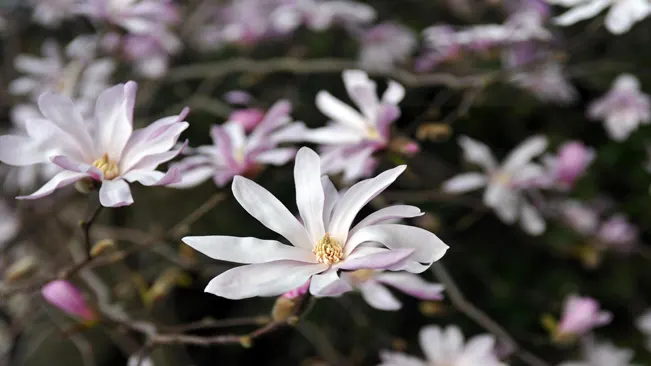
- Spectacular Display: As spring arrives, your star magnolia will burst into bloom, covering itself with an array of elegant, star-shaped flowers. These blooms, ranging from pure white to delicate shades of pink, create a breathtaking spectacle in your garden, attracting attention and admiration from all who see them.
- Fragrance: In addition to their visual appeal, star magnolia flowers emit a sweet and delicate fragrance that fills the air with a sense of freshness and renewal. Take time to inhale their perfume, which adds another layer of enjoyment to your outdoor space.
- Cut Flower Arrangements: Bring the beauty of spring indoors by cutting a few branches of blooming star magnolia to create stunning floral arrangements. Place them in vases or containers filled with water, and enjoy the sight and scent of these exquisite flowers adorning your home.
- Floral Photography: Capture the ephemeral beauty of star magnolia blooms through photography. Whether you’re an amateur enthusiast or a seasoned photographer, the intricate details and soft colors of these flowers make for captivating subjects, allowing you to preserve their beauty long after the blooms have faded.
- Garden Focal Point: Incorporate your star magnolia into your garden design as a focal point or centerpiece. Its graceful form and abundant blooms will draw the eye and create a sense of harmony and balance within the landscape.
- Enjoying Nature: Take time to sit back and simply enjoy the presence of your star magnolia in the garden. Whether you’re sipping your morning coffee or unwinding after a long day, let the beauty of nature’s creation soothe your senses and uplift your spirit.
- Sharing the Joy: Share the joy of your star magnolia blooms with friends, family, and neighbors. Invite them to visit your garden and experience the enchanting display firsthand, or gift them with cuttings or photographs to spread the beauty and inspiration further.
- Seasonal Celebration: Celebrate the arrival of spring and the renewal of life by hosting a gathering or picnic in your garden surrounded by the blooming star magnolia. Create lasting memories with loved ones amidst the beauty of nature’s seasonal bounty.
- Cultivating Appreciation: Cultivate a deeper appreciation for the cycles of nature and the wonders of the natural world through your interactions with your star magnolia. Observe the changes it undergoes throughout the seasons, from bud to bloom to leaf, and marvel at the intricate processes of growth and renewal.
- Gratitude: Finally, express gratitude for the privilege of nurturing and caring for such a magnificent plant. By providing it with the conditions it needs to thrive, you not only enhance your own life but also contribute to the beauty and diversity of the world around you.
Conclusion
In conclusion, growing star magnolia can be a rewarding experience for gardeners of all skill levels. By providing the right growing conditions, regular maintenance, and a little TLC, you can cultivate a healthy and thriving star magnolia that will enhance the beauty of your garden for years to come. So roll up your sleeves, dig in the dirt, and get ready to enjoy the enchanting beauty of star magnolia in your own backyard.
FAQs (Frequently Asked Questions)
- What is the best time to plant star magnolia?
Star magnolias are best planted in early spring or fall when the weather is cool and the plant can establish its root system before extreme temperatures set in. - How much sunlight does star magnolia need?
Star magnolias prefer full sun to partial shade. They thrive in locations that receive morning sun and afternoon shade, especially in hot climates. - How often should I water my star magnolia?
Water your star magnolia deeply and consistently, especially during the first growing season. Aim to keep the soil evenly moist but not waterlogged. Adjust watering frequency based on weather conditions and soil moisture levels. - Do star magnolias require pruning?
While not necessary for the plant’s health, pruning can help maintain a desired shape and remove dead or damaged branches. Prune your star magnolia immediately after flowering to avoid cutting off next year’s flower buds. - What type of soil is best for star magnolia?
Star magnolias prefer well-drained soil that is rich in organic matter. Amend heavy clay soil with compost or aged manure to improve drainage and fertility. - How big do star magnolias grow?
Star magnolias typically reach a height and spread of 10 to 15 feet at maturity. However, their growth rate can vary depending on environmental conditions and cultural practices. - Do star magnolias attract pollinators?
Yes, star magnolia flowers attract pollinators such as bees and butterflies with their sweet fragrance and abundant nectar. They play an essential role in supporting local pollinator populations. - Can I grow star magnolia in a container?
While star magnolias prefer to be planted in the ground, they can be grown in large containers or pots if provided with adequate space, drainage, and nutrients. Choose a container with sufficient room for root growth and use a well-draining potting mix. - How can I encourage more blooms on my star magnolia?
To encourage prolific blooming, provide your star magnolia with proper sunlight, water, and nutrients. Avoid heavy pruning, as this can remove next year’s flower buds. Additionally, apply a balanced fertilizer in early spring to promote healthy growth and flowering. - Are star magnolias prone to pests and diseases?
While generally resistant to pests and diseases, star magnolias may occasionally encounter issues such as scale insects, aphids, or powdery mildew. Monitor your plants regularly for signs of infestation or disease, and take appropriate measures to address any problems promptly.
For more expert gardening and advice, explore our guides, discover top recommendations in our best section, and delve into in-depth product reviews in our review section. Happy Gardening.

Kristine Moore
Forestry AuthorI'm Kristine Moore, a seasoned garden landscaping professional with over 30 years of experience. My extensive career has been dedicated to transforming outdoor spaces into stunning, sustainable landscapes. With a deep understanding of horticulture, design principles, and environmental stewardship, I have become a respected figure in the field, known for creating harmonious, visually appealing, and eco-friendly gardens. My commitment to excellence and continuous learning in landscaping trends and techniques has solidified my reputation as an expert in garden design and implementation.

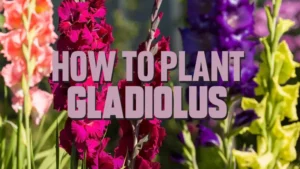


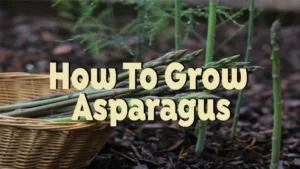



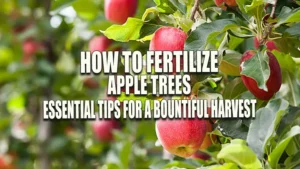
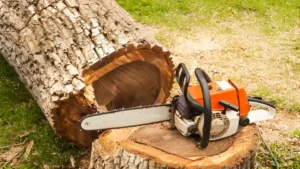

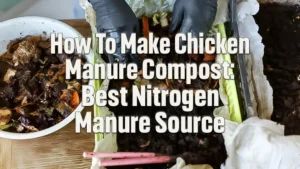

Leave your comment